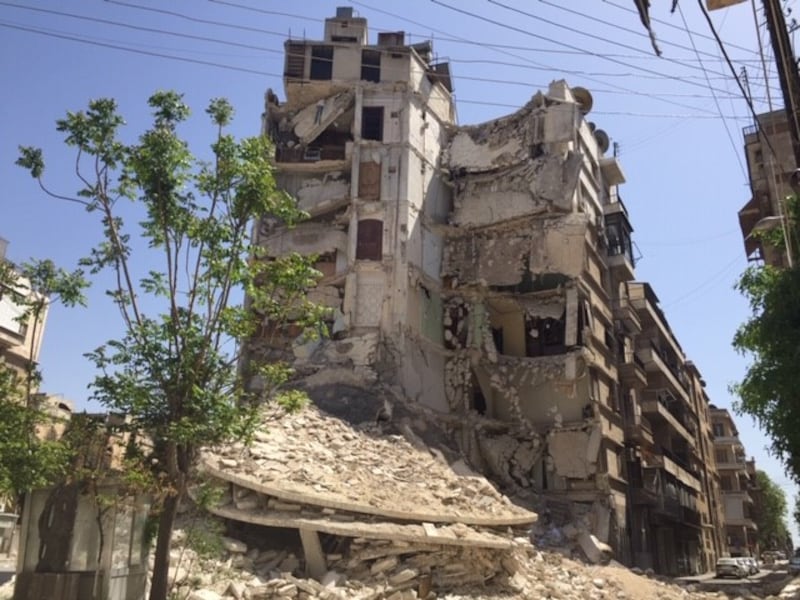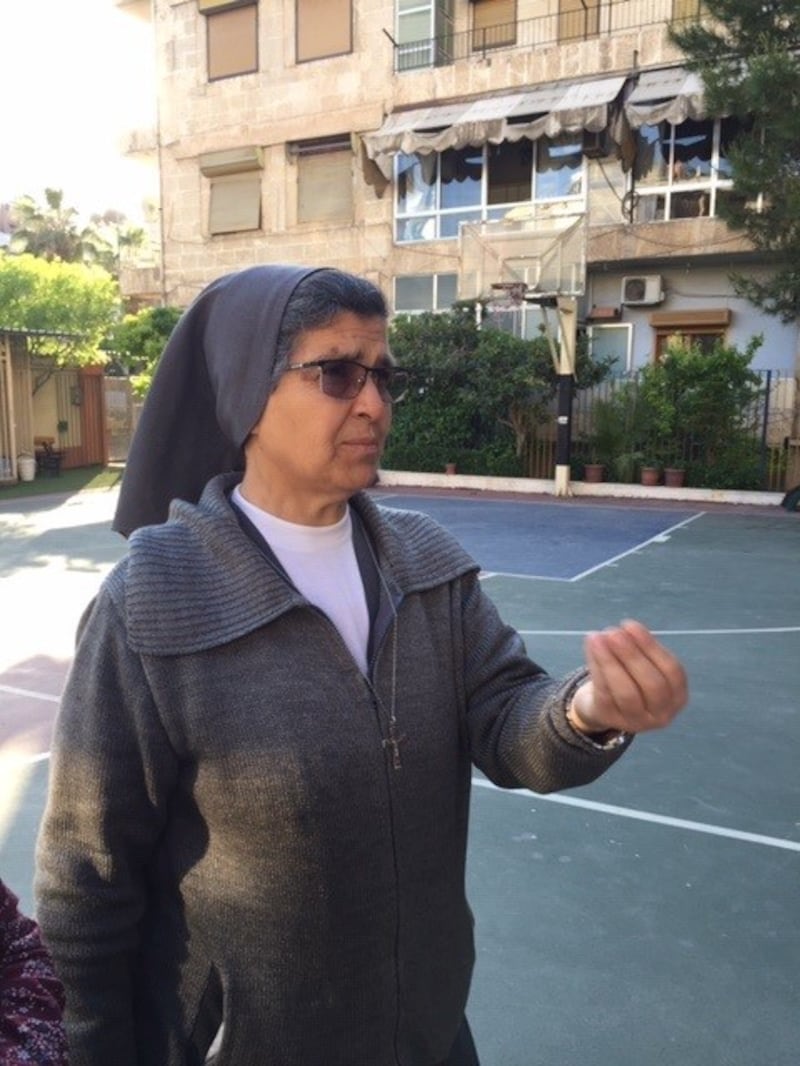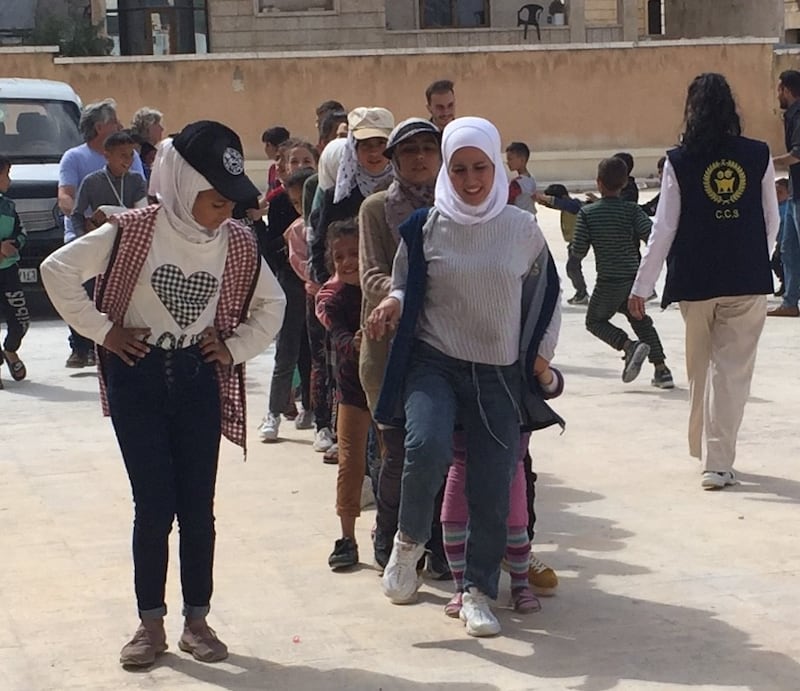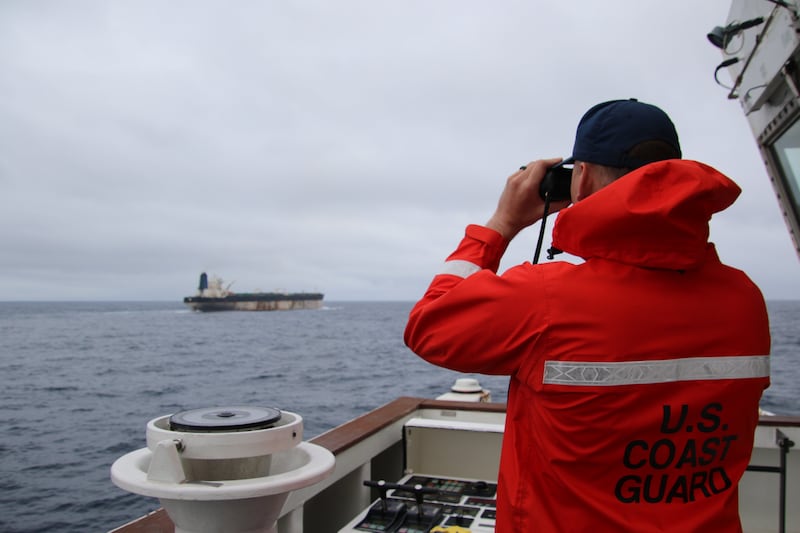Earthquakes can be capricious. The twin quakes of 7.8 and 7.6 magnitude which struck northwestern Syria and southeastern Turkey on February 6th wiped out entire neighbourhoods or specific buildings, striking with deadly force. In western Aleppo, where war and earthquake damage are limited, a small block of flats was torn in half and pancaked on to the street, killing 11 doctors and their families. Surrounding buildings are untouched.
Stone facings of buildings, including the yellow block housing the Chamber of Industry, have been stripped away and lie on the ground. In eastern Aleppo, the battle-battered sector of the city contolled until December 2016 by jihadis and other armed groups, stones from buildings toppled by the earthquake are white while war rubble is stained grey by pollution.

Earthquake refugees can come from totally or partially wrecked homes or from homes untouched by the earth’s terrifying rampage. They can be temporary, longer-term or permanent.
Two Salesian sisters who run a kindergarten for 121 children received shocked and shaken earthquake refugees from their area, which was once Christian but is now heavily Kurdish Muslim. Sister Jeanette said the earthquakes drove families from their homes at 4.15am. “A lot of them stayed in the streets, too scared to remain at home. Some came here, without warm clothes. It was very cold. We had 150-300 people during the first week. We gave them food, jackets, money.”
READ MORE

At first they stayed in the basketball court because they were afraid to enter the building. Eventually they moved into classrooms. “We had UN and Red Cross aid. Syrians abroad sent money.”
Refugees stayed at the kindergarten for five weeks and continue to come for aid.
The Beyouni school in an upper-class district on the edge of Aleppo hosts 293 homeless men, women and children from different locations. Food, bedding, clothing and medical care are provided by the Council for the Children of Syria (CCS), which has branches across the country and seven schools in Aleppo. Meals are prepared at a central kitchen and delivered to the schools.
This refuge is run by two full-time staff and five or six volunteers who come daily. Abel Nasser Muslim is a lawyer who says that during the war, “we lost our lives, lost the time to be young.” The earthquakes are taking another toll.
Financial support comes from generous Syrians and the Syria Trust for Development. Former fashion designer and CCS head Mozna Olaby turned to charity work in 2012 after her clothing factory was destroyed by the war. She says: “There are no international donations. We will take any help we can get. We need medical equipment and medicine.”

Children of all ages and sizes gather on the paved area in front of the school to conga, perform exercises and receive gifts of toys to keep them busy. When I asked a grinning, gangling boy why he his right arm is in a fresh plaster cast, he replied, “I was playing football.”
Iraq’s Hashd al-Shaabi – Popular Mobilisation Forces – is building 500 34sq m prefabricated housing units in a well planned refugee estate at Jibreen on the outskirts Aleppo. The materials are manufactured in Iraq while the workers are Syrian. Each unit has two bedrooms, a bathroom, kitchen and salon. The young Baghdadi officer in charge explained that the project will have a clinic, a school and shops.
“The government will provide water, electricity and sewage and buses.”
Earthquake victims will be the first to stay, war refugees returning from Turkey could be next. While huts are designed for five years, refugees in this region have a reputation for staying for decades.



















